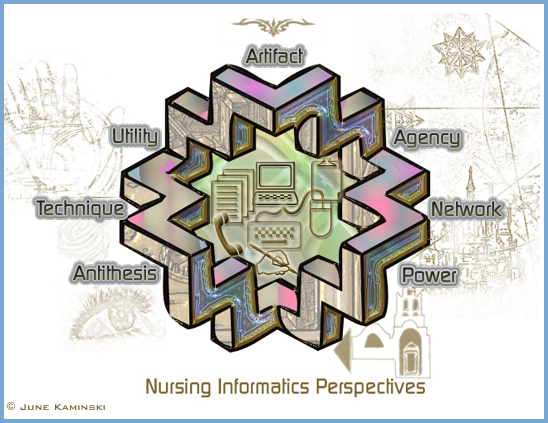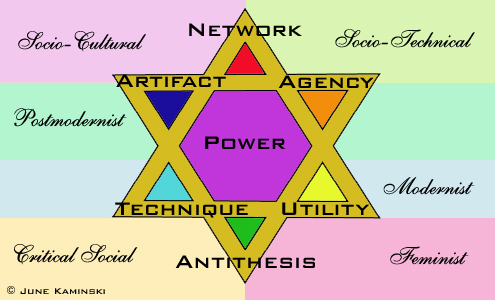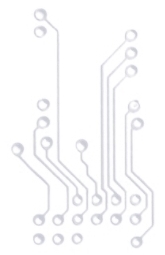
Figure 1: Nursing Informatics Perspectives Conceptual Model
The process of delineating any emerging science, field, or discipline includes the adoption of language to describe the intricacies, actions, and components inherent to the field's essential properties and scope. The term “informatics” is an example of this new language. First coined in 1957 by German computer scientist, Karl Steinbuch, as “Informatik”, followed by Phillippe Dreyfus in 1962 as “Informatique”, and further translated into “Informatics” by Walter F. Bauer, the term informatics combined the terms “information” and “automation” to name automatic information processing. The combination of “informat” with the suffix “ics” broadened the definition to address the actual science and inherent theories of information and information processing. As information technology began to be applied within various disciplines and social arenas, the term “informatics” was linked to the specific field in question, for instance, medical informatics, health informatics, business informatics, and so on. In 1980, Scholes and Barber applied this new term to the art and science of nursing, coining the term, “nursing informatics”, which they defined as “...the application of computer technology to all fields of nursing-- nursing services, nurse education, and nursing research” (p 73).
As new information and communication technologies (ICTs) emerged over the past three decades, the term nursing informatics has evolved to encompass all usage of technologies within the scope of nursing practice, education, research, and administration. This evolution sparked the emergence of a myriad of definitions of the term, nursing informatics. In 2002, Staggers and Bagley-Thompson published a thorough review of the evolution of these terms, and categorized the definitions into three themes: information technology oriented; conceptually oriented; and role oriented definitions.
A simple example of the information technology oriented definitions of nursing informatics is represented by the interpretation proposed by Scholes and Barber in 1980. A more complex definition, using the same information technnology oriented theme was proposed by key Canadian nursing informatics expert, Kathryn Hannah in 1985. Hannah defined nursing informatics as “the use of information technology in relation to any of the functions which are within the purview of nursing and which are carried out by nurses. Hence, any use of information technology by nurses in relation to the care of patients, or the educational preparation of individuals to practice in the discipline is considered nursing informatics" (p. 181).
As the use of information technology further developed in nursing, conceptually oriented definitions emerged, such as the widely applied definition by Graves and Corcoran in 1989. “Nursing informatics is a combination of computer science, information science, and nursing science designed to assist in the management and processing of nursing data, information, and knowledge, to support the practice of nursing and the delivery of nursing care” (p. 227). This development to a conceptually oriented perspective “...allowed a concentration on the purpose of technology rather than on the technology itself. This definition and emphasis on nursing data, information and knowledge was a novel change in direction in the late 1980s” (Staggers & Thompson, 2002, p 257).
The 1990's introduced a new focus on the actual users of technology in the context of nursing informatics. Role oriented definitions emerged in line with the emergence of the leadership role of the Nursing Informatics Specialist. In 1994, the American Nursing Association (ANA) refined a nursing informatics definition to encompass this new role, stating that “"Nursing informatics is the specialty that integrates nursing science, computer science, and information science in identifying, collecting, processing, and managing data and information to support nursing practice, administration, education, research and the expansion of nursing knowledge" (p. 3). In Canada, Kathryn Hannah, Marion Ball, and Margaret Edwards refined a role oriented definition in the same year as the ANA. They theorized that nursing informatics included the “... use of information technologies in relation to those functions within the purview of nursing, and that are carried out by nurses when performing their duties. Therefore, any use of information technologies by nurses in relation to the care of their patients, the administration of health care facilities, or the educational preparation of individuals to practice the discipline is considered nursing informatics. For example, nursing informatics would include, but not be limited to, the use of artificial intelligence or decision-making systems to support the use of the nursing process; the use of a computer-based scheduling package to allocate staff in a hospital or health care organization; the use of computers for patient education; the use of computer-assisted learning in nursing education; nursing use of a hospital information system; or research related to information nurses use in making patient care decisions and how those decisions are made" (p 5).
Further, Staggers and Bagley-Thompson (2002) proposed that nursing informatics could be defined as “...a specialty that integrates nursing science, computer science, and information science to manage and communicate data, information, and knowledge in nursing practice. Nursing informatics facilitates the integration of data, information, and knowledge to support patients, nurses, and other providers in their decision making in all roles and settings. This support is accomplished through the use of information structures, information processes, and information technology" (Staggers & Thompson, 2002, p. 260).
As the impact of ICTs in health care grew, the Canadian Nurses Association initiated formal projects, policy statements and plans to guide the development of Canadian nursing informatics. “If Canada's health care system is to benefit fully from these technological developments, health care professionals, providers and institutions must be involved in monitoring and adapting information and communication technology to health needs” (Canada Health Infoway, 1999, p.20). Since the early 1990s, the Canadian Nursing Association has spearheaded several initiatives to prepare nurses to become active and knowledgeable participants in these developments.
One such initiative, begun in 1998, was the National Nursing Informatics Project, created to begin to develop a national consensus on definition, competencies, and educational strategies and priorities in nursing informatics development. "In 1998 a national steering committee was formed to address Nursing Informatics issues and develop strategies to ensure that Registered Nurses have the competencies required to successfully carry out the responsibilities of their practice - whether that be clinical, administrative, educational or research. The first phase of the project was the development of a Discussion paper primarily authored by Hebert in 1999, and the collection of feedback on key issues related to nursing informatics competencies development from Canadian nurses.
The Canadian Nurses Association released a number of supportive documents to promote nursing informatics. In 2001, a key one was published in the September Nursing Now Bulletin, entitled: What is Nursing Informatics and why is it so important? This publication was a critical overview of the essential characteristics of the emerging field of nursing informatics in Canada. It also introduced a definition of nursing informatics, formulated by the National Nursing Informatics Project working group. “Nursing Informatics (NI) is the application of computer science and information science to nursing. NI promotes the generation, management and processing of relevant data in order to use information and develop knowledge that supports nursing in all practice domains” (p.1).
Over the past four decades, the field of informatics has become the focus of a large body of research, theory development and scrutiny across most disciplines. In order to address both the visible and hidden aspects and nuances of informatics in nursing, a complex review of the literature was necessary. As this review was conducted, several emergent themes became clear. Each theme contributed to a wide angle lens of the implications, barriers, benefits, processes, and danger signs that accompanied the adoption of information technologies into nursing and other disciplinary arenas. For the purpose of this comprehensive examination, these themes have been fashioned into a conceptual framework that focuses on seven significant perspectives of informatics: antithesis, artifact, utility, technique, agency, networks, and power. All seven of these views present an unique yet interwoven body of analysis that helps to shape the experience and adoption of nursing informatics when applied to the context of nursing practice, education, research, and administration (see Figure 1 above and Figure 2 below).
The theme, Antithesis refers to ideas presented in the literature that purport that the use of computers and other information technologies in health care is a threat: in fact it is the antithesis or opposite of providing compassionate, caring and client-centered nursing care. The Artifact view refers to the notion that technology of all kinds, including the contemporary inclusion of information technologies in nursing is an inherent, almost seamless cultural phenomenon, one that is long-standing and can be taken for granted as part of nursing evolution. Utility literature presents information technologies as simple, benign, and useful tools that nurses control and apply to their practice, research, studying, and management activities. The concept of Technique focuses on the application of information technologies in nursing aimed to boost productivity and efficiency, promote best practices and evidenced-based practice, and concretely record nursing activities electronically.
A focus on Agency incorporates actor-network theory, technological agency in its' own right, and how nurses interact with ICTs in an interactive and intense, almost reciprocal way. The notion of Networks entails an examination of the application of information technologies in a collaborative way: in interactions with other people, such as colleagues, interdisciplinary team members, clients, and communities of practice and inquiry, sometimes on a global scale. Finally, the theme of Power will be investigated from a disciplinary perspective, including the consequences of prestige, influence, legitimacy, governmentality, and social access. Together, these seven themes provide a rich, sometimes discordant yet crucial analysis of the varied philosophical and active ways that information technology and informatics are enacted and applied in the nursing arena.

Figure 2: Conceptual Model Shaped by Philosophies
|





